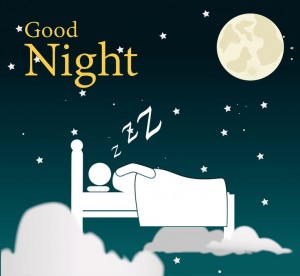There are plenty of myths floating around about sleep and often times we may apply them to our lives. Incorrect information can cause serious problems and may even be dangerous. The National Sleep Foundation has compiled a short list of common myths about sleep with the real facts in order to protect us and help us sleep better.
1. Snoring is a common problem, especially among men but, it isn’t harmful.
Snoring may be harmless for most people but, it can also be a sign of a life threatening sleep disorder called sleep apnea. Sleep apnea is a condition that is indicated by pauses in breathing that prevent air from flowing and out of a sleeping person’s airways. It is not uncommon for people with sleep apnea to wake up frequently during sleep gasping for air. The pauses in breathing reduce blood oxygen levels, can strain the heart and cardiovascular system, and increase the risk of cardiovascular disease. Snoring on a frequent or regular basis has been directly associated with hypertension. Obesity and a large neck can contribute to sleep apnea. Sleep apnea can be treated; men and women, who snore loudly, especially if pauses in the snoring are noted, should consult a physician.
2. You can “cheat” on the amount of sleep you get.
Sleep experts agree that adults need between 7 and 9 hours of sleep every night for optimum performance, health and safety. When we miss out on sleep, when accumulate “sleep debt” that can be difficult to pay back. Sleep deprivation has been linked to obesity, high blood pressure, negative mood and behavior, decreased productive, and safety issues at home, at work and on the road.
3. Turning up the radio, opening the window, or turning on the air conditioner are effective ways to stay awake when driving.
Don’t count on these measures to keep you safe on the road. They can be dangerous for the person who is behind the wheel. The best method to protect yourself and others is to pull off the road into a safe rest area and take a 15-30 minute nap. Caffeinated beverages can help the driver for a short amount of time, but keep in mind in takes about 30 minutes before the effects are felt.
4. Teens who fall asleep in class have bad habits and/or are lazy.
Teens need at least 8.25 to 9.25 hours of sleep each night, according to sleep experts. Their biological clocks naturally keep them awake later in the evening and sleeping later in the mornings. Many schools begin classes early in the morning, when a teenager’s body still wants to sleep. Teens may come to school too sleepy to learn through no fault of their own.
5. Insomnia is characterized by difficulty falling asleep.
There are 4 symptoms of insomnia with difficulty falling being one of them. The others include, waking up too early, not being able to fall back asleep, frequent awakenings, and waking up feeling unrefreshed. Insomnia can be a sign of other sleep disorders, other medical or psychological/problems. When insomnia symptoms occur more than a few times a week and impact a person’s daytime functions, the symptoms should be discussed with a doctor or other health care provider.
Don’t be afraid to ask questions and map out your road to better sleep. Small adjustments such as turning off your TV in your bedroom or not drinking coffee after lunch time can make a big difference. Great quality sleep starts with you!



No comments yet.